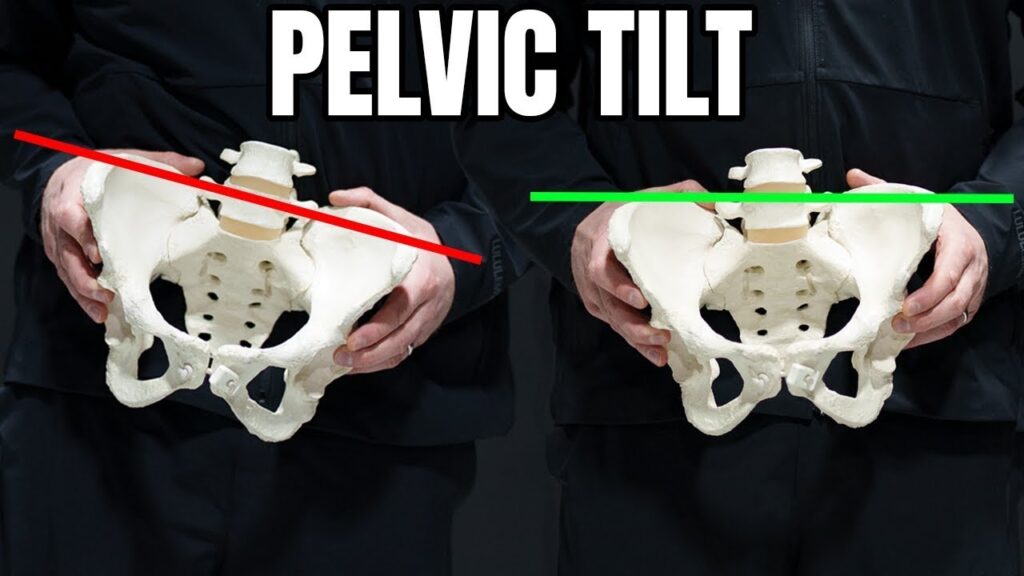
A few common habits and conditions can lead to pelvic rotation and tilting
Usually unnoticed, lateral pelvic tilt is a subtle posture problem that causes pain, discomfort, or even mobility problems once it starts. Your pelvis may be out of alignment if you have had lower back discomfort or have ever observed one side of your hips sitting higher than the other.
Targeted workouts strengthening weak muscles, releasing tight ones, and restoring hip balance help you address lateral pelvic tilt.
In this guide, we will discuss the following:
- What causes lateral pelvic tilt
- Why it matters for your posture and movement
- 5 effective exercises to realign your pelvis
What Is Lateral Pelvic Tilt?
Lateral pelvic tilt happens when the pelvis is not level and instead tilts to one side.
This imbalance can cause:
- Postural issues – Your body adjusts for the imbalance, developing either an abnormal walking pattern or uneven shoulders and an angled spine.
- Lower back pain – The imbalance could be uncomfortable and strain your lower back muscles.
- Hip and knee problems – Your legs’ performance suffers when your pelvis is misaligned, which causes joint pain.
What Causes Lateral Pelvic Tilt?
A few common habits and conditions can lead to pelvic rotation and tilting:
- Uneven weight distribution – Standing or sitting with more weight on one leg.
- Muscle imbalances – Tight muscles on one side and weak muscles on the other pull the pelvis out of position.
- Poor sitting habits – Keeping your legs crossed or leaning to one side for a prolonged period of time.
- Leg length discrepancy – Having a little longer leg than the other can often lead to a minor tilt.
Now that we know what’s causing the problem, let’s focus on how to fix it!
5 Lateral Pelvic Tilt Exercises to Restore Balance
To realign your pelvis, you need to perform these exercises to stretch out tight muscles, strengthen weak ones, and retrain your posture.
1. Hip Hike Exercise (Strengthens weak hip muscles)
This basic yet effective exercise allows the muscles maintaining your pelvis level to become active.
How to do it:
- Get on with your feet hip-width apart.
- Place one foot on a slightly raised surface (a step or low platform)
- Keeping your upper body still, lift your hip on the lower side towards the raised leg.
- Slowly lower it back down.
- Ten to fifteen repetitions on each side are suggested.
Why it works:To support the pelvis, this exercise strengthens the gluteus medius and the obliques.
2. Side-lying leg Raises (Activates hip stabilizers)
A great move to strengthen the outer thigh and glute muscles, which help control pelvic position.
How to do it:
- Lay on your side, supporting yourself with a bent lower leg.
- Keep the top leg straight and lift it towards the ceiling.
- Lower it back down slowly and with control.
- Perform 12-15 reps per side.
Why it works: Strengthens the abductors and corrects muscle imbalances.
3. Standing QuadratusLumborum Stretch (Releases tight lower back muscles)
If your lower back is too tight on one side, it could be pulling your pelvis out of position.
How to do it:
- Stand up straight and cross one foot behind the other.
- Raise the arm of the higher hip side overhead.
- Lean to the opposite side until you feel a stretch in your lower back and side.
- Hold for 20-30 seconds, then switch sides.
Why it works: Loosens tight muscles that pull the pelvis out of alignment.
4. Glute Bridge with Band (Corrects posterior pelvic tilt)
This is one of the top exercises to correct posterior pelvic tilt, helping to bring the pelvis back to its natural position.
How to do it:
- Lie on your back with your knees bent and feet flat on the floor.
- Place a resistance band around your thighs (optional).
- Squeeze your glutes and lift your hips off the ground until your body forms a straight line.
- Lower slowly and repeat 12-15 reps.
Why it works: Strengthens the glutes and core, which help maintain a neutral pelvis.
5. Cat-Cow Stretch (Improves pelvic mobility)
This dynamic stretch releases tension in the spine and hips while improving flexibility.
How to do it:
- Position yourself on all fours with your hands placed under your shoulders and your knees placed under your hips.
- Inhale and arch your back, raising your tailbone and head in Cow Pose.
- Exhale and round your back, tucking your pelvis under (Cat Pose).
- Repeat 10-12 times.
Why it works: Encourages pelvic mobility and corrects poor posture.
Final Thoughts: Get Your Pelvis Back in Balance
In spite of the fact that it appears to be a minor misalignment, lateral pelvic tilt if left untreated, can result in poor posture, pain, and restricted mobility. Regular awareness and concentrated workouts help you resolve problems and restore correct alignment.
If you want to improve your comfort, posture, and mobility, try including these lateral pelvic tilt exercises in your weekly routine.


